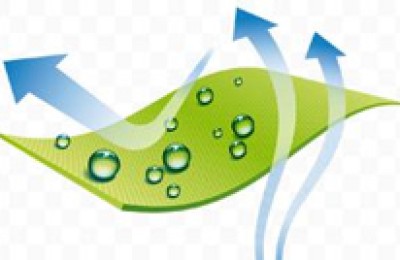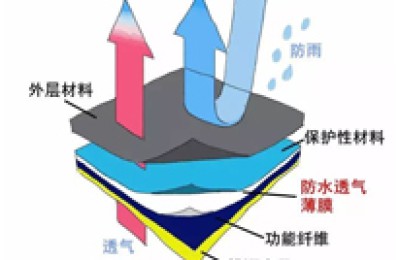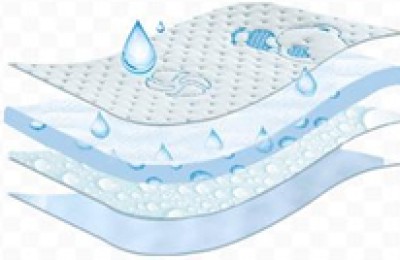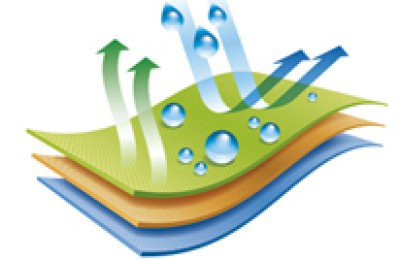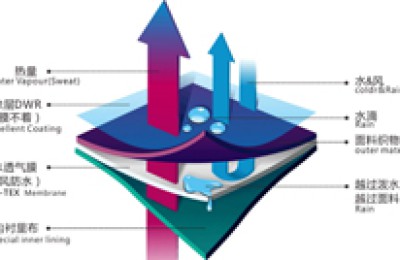Practical applications of polymer flame retardancy
Practical applications of polymer flame retardancy
It is necessary to conduct in-depth research on the flame retardant mechanism of polymers. The study of polymer flame retardant modification is an emerging field in which the current flame retardant mechanism of polymer modification is inseparable from the study of the polymer combustion process. To get to know.
Therefore, only a deep understanding of polymer-based silicone oils has the characteristics of various viscosities, non-toxic, odorless, non-corrosive, and non-flammable. Methyl silicone oil in silicone oil can show the characteristics of polysiloxane and is the main variety in silicone oil. It can be produced by changing the degree of polymerization of polysiloxane and the type of organic groups or by copolymerizing polysiloxane with other organic matter. Silicone oil with basic properties such as waterproof, anti-adhesive, demoulding, defoaming, foaming, emulsification, lubrication, dielectric, compression, high and low temperature resistance, aging resistance, UV resistance, radiation resistance, low volatility, etc., is widely used in many Industrial sector. After 20 years of development, the silicone production in our province has reached a certain scale and has great development potential. Currently, there are 12 varieties of silicone monomers, and more than 20 varieties of silicone oils and their deep-processed products.
In the future, the development and in-depth processing of new varieties of silicone monomers and new silicone oils should be strengthened on the existing basis. The silicone monomers that can be developed include phenyltrimethoxysilane, diphenyldimethoxysilane, ethylchlorosilane, etc. New varieties of silicone oil that can be developed include ethyl silicone oil, ethyl hydrogenated silicone oil, etc. The deep processing of existing varieties mainly involves the development of polishing agents (such as advanced polishing pastes for automobile polishing), silicone fabric finishing agents, defoaming agents, etc. In the future, we will vigorously develop silicone insulating paints, coatings, adhesives, coupling agents, etc. 5.4 Feed additives Currently, there are few feed additive varieties and poor quality in our province, and there are no advantageous products. The product only contains a small amount of vitamins, poultry feather hydrolyzed amino acids, industrial grade inorganic salts, trace elements, etc.
Therefore, it is recommended to develop some important varieties with excellent performance and high demand to promote the development of the feed industry in our province. 5.4.1 Methionine: This product is used as a supplementary additive for amino acids in feeds and has a large demand (the national demand in 2000 was 50,000 tons). my country imports a large amount of methionine every year (more than 730 tons were imported in 1992). The raw materials required for the production of methionine are acrolein (obtained from the oxidation of propylene or a by-product of acrylonitrile), methanol, hydrogen sulfide, sodium hydride, etc. These raw materials are available in our province, and we can consider building a 10,000-ton production unit. , to meet the market demand inside and outside the province. 5.4.2 Propionic acid: Propionic acid and its sodium and calcium salts are excellent feed preservatives and are imported in large quantities into my country every year. The industrial methods of propionic acid include Yiji synthesis method, Leipei method, and deep processing of acrylonitrile by-product (acrolein).
The Anqing Petrochemical General Plant in our province has started an acrylic acid project, so there is much to be done for the deep processing of acrylic by-products. Our province can consider building a set of propionic acid production lines of a certain scale. (This article is an abstract of a research paper. The original text is nearly 30,000 words and rich in content, including the production and application status of existing varieties, the performance, uses, and preparation methods of proposed varieties, etc. The burning situation can provide an in-depth understanding of flame retardant processing. Research, only in-depth research on the flame retardant mechanism can guide practical application work more effectively. 2 Combustion Process of Polymers 2.1 Combustion Process of General Polymers From the data point of view, the research on the flame retardant mechanism of polymers has long been related to polymerization. It was an Italian professor who related the combustion process of substances and proposed the theory of self-sustaining combustion cycle process.
They began publishing articles on flame retardant applications and flame retardant mechanisms before 1982, and they have published at least a dozen articles so far. In recent years, Professor Wang Jianqi and others from the Flame Retardant Laboratory have also begun to publish papers on flame retardancy. In his paper “A Review of the Performance and Mechanism of Flame Retardants in Polymers”, the professor first proposed a solution model for the polymer combustion process (see 1) (`). Professor Amino believes that organic polymer materials represent the entire complex combustion process. Combustion begins when heat from an ignition source contacts volatile combustible products whose concentration is within the ignition limit and the temperature is above the ignition point. Then as long as the heat supplied to the polymer is sufficient to maintain the degradation rate of the polymer required by the flame, the combustion will continue, otherwise the flame will be extinguished. When the heat provided by the ignition source is interrupted or negligible, a self-sustaining combustion cycle occurs if the heat required above is satisfied by the thermal oxidation process occurring in the gas phase (flame) or condensed phase. 1 has a general meaning. Depending on the type of polymer and different combustion conditions, some steps, such as coking or thermal oxidation of the condensed phase (middle dashed line), may not occur.
The purpose of the flame retardant system is to reduce the heat supplied to the polymer below the critical level that maintains flame stability, by improving (usually reducing) the speed of chemical or physical processes that occur in one or several steps during the combustion process. achieve this goal. 2This solution model is too simple for the study of polymer combustion processes. It even ignores the difference between the gas phase and the condensed phase during polymer combustion. However, the author believes that this form is very beneficial for explaining the flame retardant mechanism of polymers simply and clearly. Cutting off the circulation at B is obviously the flame retardant mechanism of the halogen flame retardant in the gas phase flame retardant mechanism. Cutting off the circulation at C is the heat transfer hindrance mechanism in the expansion carbonization flame retardant mechanism; and cutting off the circulation at A is either The hindering mass transfer mechanism in the expansion carbon flame retardant mechanism or the inorganic hydrogen in the gas phase flame retardant mechanism.From a � perspective, the porous carbon layer must be able to prevent heat and mass transfer between the polymer and the flame. If only the thermal insulation performance is good but the mass transfer prevention performance is not good, the flame retardant efficiency will not be high. The author believes that if the concepts of open-cell and closed-cell structures in foamed polyurethane are introduced here, the structure of the porous char layer should be closed-cell structure.
In 1988, the professor proposed a method of using oxygen index and nitrogen index to distinguish gas phase or condensed phase flame retardancy. The principle is mainly based on the active H·· in the polymer combustion process. `: Inhalation. Litong 100% Magic 8C ) is mu 5 public atomic center 2ù public Oj leakage is called the birth of Bian violently. The free radical in oxygen undergoes branching reaction in the form of reaction gas 2), that is, there is no branching reaction. Therefore, the oxygen index and nitrogen are used The oxygen index is determined by the amount of flame retardant added. Based on the shape of the curve, that is, whether the changing trends of the curves are the same, it is determined whether it is a gas phase or a condensed phase flame retardant mechanism. Generally speaking, when the changing trends of the curves are the same, it is a condensed phase mechanism, and if they are different, it is a gas phase. Mechanism. 8 and 9 are two examples in the original paper. The calorimeter imported by Gatory Company analyzed the polymer combustion gas products and pointed out that during gas phase flame retardancy, the content of CO in the combustion gas products is very large; while in the solid phase When flame retardant, the combustion gas product is basically CO:. The author believes that this may be due to the reaction of a large amount of H· and OH· free radicals with hydrogen halide in the gas phase flame retardant (reaction formulas `4> and `5> minus Slow, so that a large amount of CO cannot react (>3 to generate CO:. This does not exist in condensed phase flame retardant. Alkali alkali (weight percent) 93.5 smoke suppressor for polymer burning With the deepening of research on flame retardant issues, the problem of smoke elimination when polymers are burned has also attracted attention. The reported smoke suppressants mainly include zinc borate, etc.
However, the research on the mechanism is not very mature. At the Beijing Conference in October 1993, a paper from the United States conducted a relatively in-depth study on the problem of smoke elimination when PVC is burned, and gave an understanding model of the smoke generator when PvC is burned (see 10): The presence of will catalyze the progress of reaction (5). Although they have smoke-eliminating effects, their smoke-eliminating mechanisms are different. 4 Conclusion This article briefly introduces the current progress of research on the combustion process and flame retardant mechanism of Guanzi polymers, and puts forward some of its own insights. V7mARy6pJn
Disclaimer:
Disclaimer: Some of the texts, pictures, audios, and videos of some articles published on this site are from the Internet and do not represent the views of this site. The copyrights belong to the original authors. If you find that the information reproduced on this website infringes upon your rights, please contact us and we will change or delete it as soon as possible.
AA




